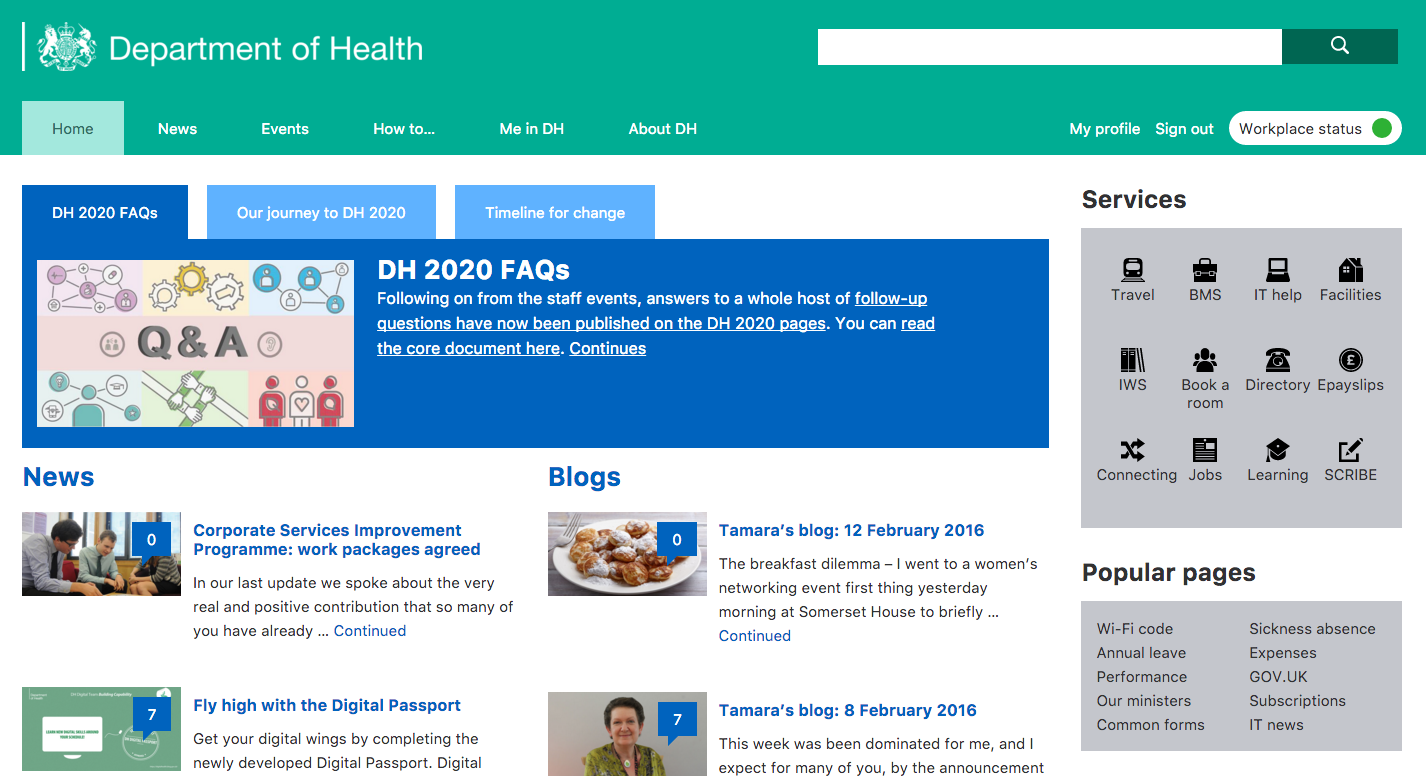We designed our intranet to be continuously improved, and over recent weeks have been doing just that. Since the intranet’s launch last year we have gathered data and done extensive research to deepen our insights into our users’ behaviour. This is enabling us to flex our product to meet our users’ changing needs – in line with digital best practice.
In our most recent development sprint, we focussed on the homepage. The intranet homepage is the first thing most people in the department see when they log on in the morning, so it’s not surprising that 99.9% of user journeys begin there. That’s not true of all websites – GOV.UK pages are often reached via a search engine – but our default makes the homepage a prime piece of digital real estate. It deserves excellent design and only the most important content or features.
From looking at site traffic we could see the content users visited most over the past year. For instance: guidance on performance management, expenses claims, booking video conferencing, and a few specific forms. Over the last month or so, content about the DH2020 change programme has also been very popular.
This data informed our qualitative research. We interviewed twenty-one individuals, asking them about their use of the intranet. We also observed them using the homepage to try and perform particular tasks. As well as interviews, we ran card sorting exercises and a co-design workshop where users drew sketches of their ideal homepages, or voted on features they liked from other government intranets. The range of ideas generated ranged from the pragmatic to the extravagant. But the discussion was invaluable in helping our suppliers understand the needs of DH staff. Over two weeks our experts translated those insights into some of the changes you can now see:
- Bringing in common design patterns by integrating the menu, search and login into the header to help users find them
- Developing prominent areas for links to popular services and pages; these are customisable by our content team so can change as needs change
- Introducing a campaign box to highlight the most important ‘need-to-know’ information of the moment
- Increasing the number of news stories further down the page; as the large number of users felt the stories dropped off the homepage too quickly
- Retaining a clean design that users responded to well, but binning the bits that users did not need or want anymore
Communicating via Slack across several UK locations, the team deployed the changes early last Tuesday morning. Thanks to the brilliant work of the developers we encountered almost no bugs, and by the time we got into the office some fantastic feedback had started to come in.
Launching is the start of a process, not the end. We’re moving straight into more user testing, including those using assistive technologies, to ensure our changes are performing as we want.
An ‘agile intranet’ is something the department should be proud of. Internal services and tools are rarely built in this way. It has only been possible for us to effect improvements to this product quickly, cheaply, and securely thanks to our predecessors. They left us a site built on open source software, to open standards, with no contract lock-in, and with the precedent set for relentless focus on user needs. Long may that continue.
Originally posted to Digital Health Blog.
